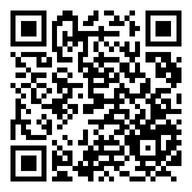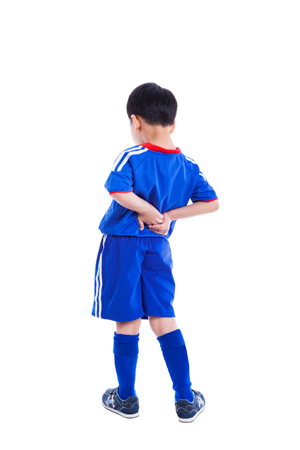Description
The spine is made up of bones (vertebrae) that are connected by ligaments (strong soft tissue connections between the bones) and separated by shock-absorbing disks. (Figure 1) The bones provide structure and support and they protect the spinal cord and the exiting nerve roots. Muscles attach to the spine and allow mobility.
In the past, back pain was considered uncommon in children and adolescents. However, recent reports suggest that back pain is common in children. The rate of back pain in children increases with increasing age. By the age of 15 years, 20 to 70 percent of children will report some back pain. Although most back pain is not due to an underlying serious problem, this is not always the case, especially in children under 5 years.
The most common cause of back pain is muscular strain, injury, or overuse. True injuries probably cause a lower percentage of pain than overuse. Repetitive running, jumping, conditioning may be more common than acute injuries and a significant number of pediatric and adolescent patients with back pain are sedentary and without known cause of pain. Core muscle imbalance or weakness may contribute to the pain. Less common causes include infection, tumor, trauma, or various deformities such as scoliosis (spinal curvature), kyphosis (round back), spondylolysis (defects or broken area of bone), and spondylolisthesis. (slipping of one bone on another).
Symptoms
Back pain can occur at any age and at any location along the back or spine.
It is important to check with a doctor if your child reports severe or progressively worsening back pain, pain that lasts more than several days, or pain that is associated with other warning signs such as:
- Fever
- Weight loss
- Night pain or pain at rest
- Trouble walking
- Weakness
- Numbness or decreased feeling in the leg or foot
- Pain that goes down one or both legs
- Bowel or bladder problems
Examination
Your doctor will start with a history and a physical exam.
During the history, your doctor will ask questions about your child’s overall health as well as questions specifically relating to the back pain. Your doctor will want to know when the pain began, if it started with a specific injury or activity, and if it is getting better or worse. He or she will ask about where the pain is located, when does it seem worse, what makes it better, and if there are any other associated complaints such as fever, weight loss, pain going down the leg, or bowel or bladder changes.
During the physical exam, your doctor will want to look carefully at your child. Your child will likely be asked to change into a hospital gown for the exam; however, he or she may be more comfortable wearing shorts or a bikini bathing suit. Your doctor will observe or inspect your child, looking for spinal curves, posture, skin changes, walking ability, and symmetry. He or she will palpate or feel each back bone to try to identify areas of pain. Your doctor will ask your child to bend forward, backward, and to the sides. He or she will check reflexes and sensation as well as move your child’s legs up and down looking for signs of pressure on the nerves exiting the spine. Your doctor will also perform tests to assess flexibility, strength and coordination.
Other tests
After a thorough exam of your child, the doctor may order one of multiple imaging studies or tests.
X-rays are useful for showing bone alignment, deformities, displacements, fractures, and some tumors, infections, or other bone disorders.
Computed tomography (CT) scans use computerized X-ray techniques to provide three-dimensional images. These scans are often used to provide detailed imaging of complex anatomy.
Magnetic resonance imaging (MRI) is useful for evaluating soft tissues such as the spinal cord, nerve roots, and disks. It is very helpful in finding infections, tumors, and neurologic sources of back pain.
Bone scans involve injecting a substance into a vein and then obtaining images that can detect where the substance settles. This technique is useful for finding areas of inflammation, infections, tumors, or fractures that don’t show up well on other types of imaging.
Laboratory tests may be recommended, especially if there is any concern for infection or inflammation. Blood tests usually include a complete blood count (CBC), erythrocyte sedimentation rate (ESR), and C-reactive protein (CRP). Additional studies may be added.
Treatment
Treatment of back pain will depend on the underlying conditions. Because of the difficulty in finding the source of pain in up to half of children/adolescents, your doctor may recommend rest or therapy after initial evaluation and x-rays.
Muscular strain or overuse (acute or chronic) is the most common cause of back pain in children and adolescents. Core muscle imbalance or weakness may contribute to the pain. Acute strains usually resolve after a period of rest or activity modification. Non-steroidal anti-inflammatory medications (ibuprofen or naproxen) and ice may help relieve acute symptoms by decreasing swelling. After 4-5 days, warm compresses may be preferred as heat may help relax muscles and decrease muscle spasm. A regular program of low impact walking with a goal of 30-45 minutes a day can help increase conditioning as initial pain improves. Hamstring stretching and abdominal strengthening can help relieve persistent back pain. Many children and adolescents will benefit from a formal physical therapy program to teach them appropriate exercises.
Round back or kyphosis may result in back pain, typically in adolescents. For some, the round back is due to poor posture and can be improved with core exercises. For others, the spine actually has structural changes that can progress and result in deformity. This condition, known as Scheuermann’s kyphosis, is characterized by wedge shaped vertebra that collapse anteriorly and result in a hunched or rounded appearance. Surgery may be indicated in severe cases.
Spondylolysis refers to a defect or stress fracture in the posterior spine that can cause low back pain. Activities that require twisting or hyperextension of the back (such as gymnastics, wrestling, diving, football, and hockey) may put increased stress in the low back resulting in trauma to the bone and eventual fracture. Pain is usually worse with back extension rather than bending forward. Tight hamstrings may pull on the pelvis resulting in flattening of the low back or difficulty taking long strides with walking or running. Taking a break from sports and doing exercises focused on hamstring stretching and core strength can help relieve tension in the low back and improve symptoms. A back brace can provide some relief. Surgery is reserved for those cases of severe pain that do not improve with non-operative treatment.
Spondylolisthesis refers to slipping of one vertebra forward with respect to the vertebra below and occurs most often in the lower, or lumbosacral, spine. Defects in the posterior spine allows for this slippage to occur. As the vertebra slips forward, it can injure spinal nerves. Often children/adolescents can participate in full sports with mild slips if pain minimal. If slips are severe or progressive, surgery may be recommended.
Disk herination rarely occurs in adolescents, but it is possible during forceful activity such as weight lifting. Unlike adults, children and adolescents still have growth plates on the ends of their vertebrae. When the disk herniates, or pushes back, the young disk may pull a fragment of this growing bone with it, and this can cause pressure on the nerves or spinal cord. When this occurs, surgery may be necessary to remove the bone fragment.
Infection can affect the vertebral bones or disks of the spine. Infection of the disk space, known as diskitis, tends to affect younger children. In addition to pain, a child with a spine infection may have fever, low back stiffness, and refusal to walk or bend at the waist. Lab tests, X-ray, and/or MRI are useful in making the diagnosis. Treatment usually involves antibiotics.
Tumors, although rare, can occur in the spine of children. Constant or progressively worsening pain, night pain, or pain associated with fever or weight loss should be evaluated by a doctor. Treatment depends on the type of tumor.
More Information
Condition QR Code:


 POSNA.org
POSNA.org

